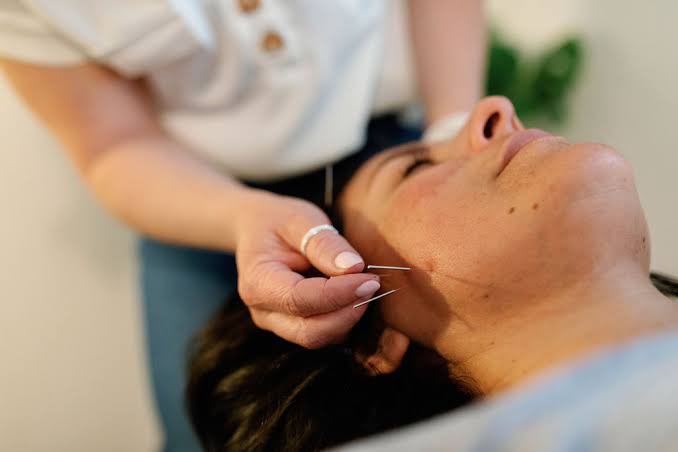TMJ, or Temporomandibular Joint Disorder, affects many people and can cause significant discomfort. This condition impacts the jaw joint and the muscles around it, leading to pain and difficulty in everyday activities like eating and speaking. Understanding TMJ and finding effective treatments is crucial for those who suffer from this disorder.
One effective way to address TMJ pain is through a technique called dry needling. Dry needling involves using thin needles to target muscle tension and trigger points. This method can provide significant relief from the discomfort associated with TMJ. By reducing muscle knots and improving blood flow to the area, dry needling can alleviate symptoms and improve jaw movement.
Managing TMJ pain involves a combination of treatments and daily practices. While dry needling offers a focused approach to easing muscle tension, incorporating simple habits at home can further enhance its benefits. Together, these strategies can make a big difference in relieving TMJ pain and helping you get back to your normal activities. We’ll explore more about TMJ, how dry needling works, and practical tips for managing TMJ symptoms at home.
What is TMJ and How Does it Affect You?
TMJ stands for Temporomandibular Joint Disorder. This condition affects the joint that connects your jaw to your skull. It can cause a lot of pain and discomfort in your jaw, face, and around your ears. Some people may even feel pain in their neck and shoulders due to this disorder.
The common symptoms of TMJ include jaw pain, difficulty chewing, and a clicking or popping sound when moving your jaw. Some people also experience headaches, earaches, and facial pain. These symptoms can make everyday activities difficult and uncomfortable. You might have trouble talking, eating, or even yawning without feeling pain. Understanding these symptoms is the first step in finding relief and managing the condition.
Understanding Dry Needling
Dry needling is a technique used to relieve muscle tension and pain. It involves inserting very thin needles into specific points on the body. Unlike acupuncture, which is based on Traditional Chinese Medicine, dry needling focuses on trigger points in muscles.
These trigger points are tight knots that can cause pain in other areas of the body. By inserting needles into these points, dry needling helps release the tension in the muscles. This method improves blood flow to the area, reduces inflammation, and promotes healing. The result is less pain and better muscle function. Dry needling is especially helpful for people with TMJ as it targets the muscles causing the jaw pain and discomfort.
How Dry Needling Helps TMJ
Dry needling offers several specific benefits for relieving TMJ pain. By targeting trigger points in the jaw and surrounding muscles, it helps reduce muscle tension and spasms. This can lead to immediate relief from pain and discomfort. The improved blood flow from dry needling also promotes healing, reducing inflammation and stiffness in the jaw area.
During a dry needling session for TMJ, the practitioner will insert thin needles into the trigger points in your jaw muscles. These needles cause a minor muscle twitch, which helps to release tightness and decrease pain. The process may involve multiple sessions, depending on the severity of your TMJ symptoms. Each session aims to progressively reduce pain, improve jaw function, and increase overall comfort.
Tips for Managing TMJ at Home
Managing TMJ at home can further enhance the benefits of dry needling. Here are some simple home remedies to help ease TMJ symptoms:
1. Apply Heat or Cold
– Use a warm compress or a cold pack on your jaw to reduce pain and swelling.
2. Gentle Jaw Exercises
– Perform gentle jaw stretching and strengthening exercises to improve flexibility and reduce stiffness.
3. Avoid Hard Foods
– Stick to soft foods that require less chewing to minimise jaw strain. Avoid chewing gum and hard candies.
4. Posture Awareness
– Maintain good posture, especially when sitting for long periods, to avoid additional strain on your jaw and neck.
5. Stress Reduction
– Engage in relaxation techniques such as deep breathing, meditation, or yoga to reduce stress, which can worsen TMJ symptoms.
Conclusion
TMJ disorder can significantly impact your daily life, but effective treatment options like dry needling offer substantial relief. By targeting the specific muscles causing pain, dry needling helps alleviate discomfort and improve jaw function. Coupled with simple home remedies, this approach can make a notable difference in managing TMJ symptoms.
Investing time in understanding and treating TMJ can lead to a more comfortable and pain-free life. Whether it’s through professional treatments like dry needling or adopting supportive home practices, every effort counts.
If you’re ready to find relief from TMJ pain, book a session with Rin Massage Therapy, a massage clinic, today. Experience the benefits of dry needling and take a step towards a healthier, more comfortable jaw.

